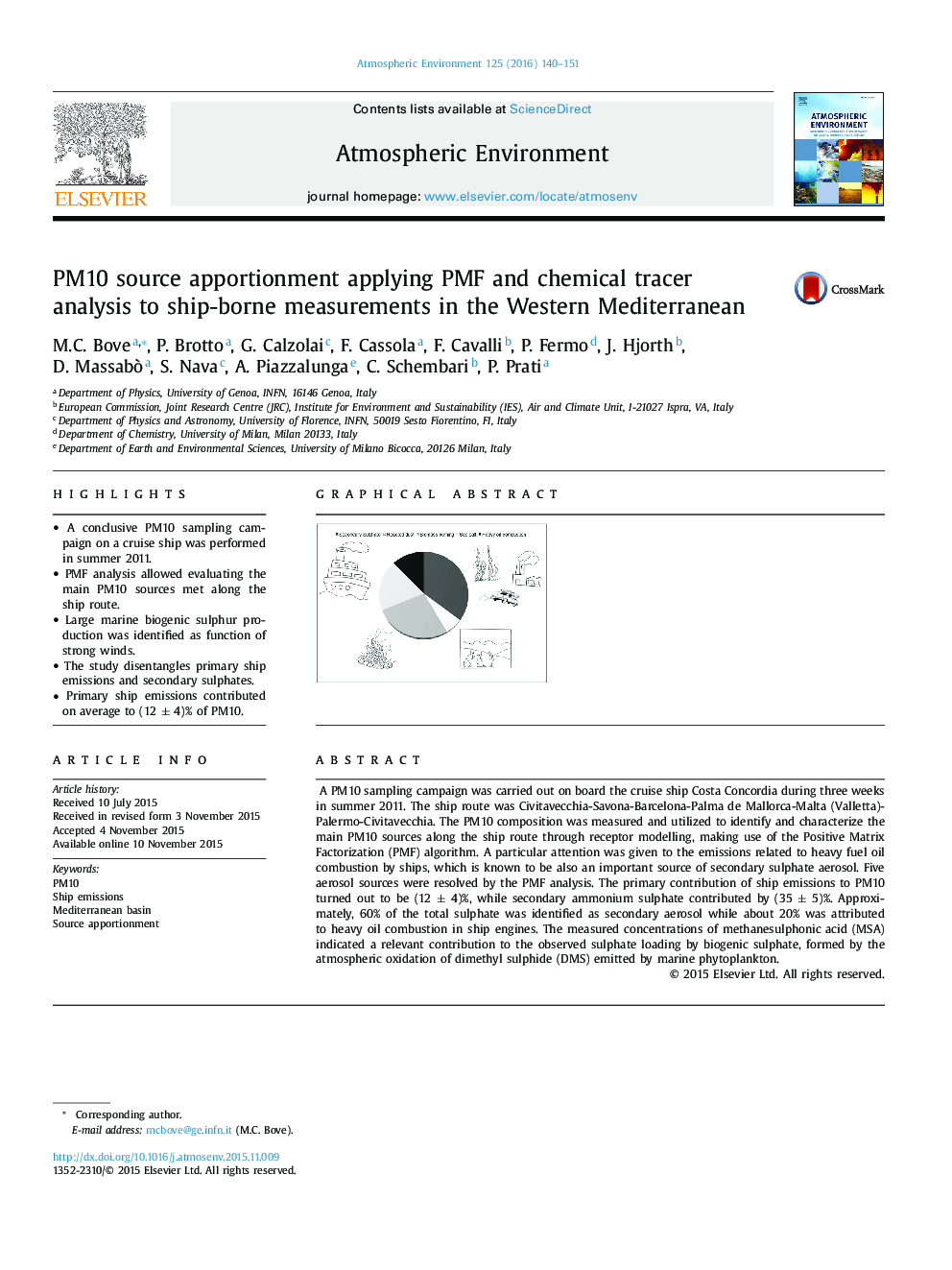| Article ID | Journal | Published Year | Pages | File Type |
|---|---|---|---|---|
| 6337244 | Atmospheric Environment | 2016 | 12 Pages |
â¢A conclusive PM10 sampling campaign on a cruise ship was performed in summer 2011.â¢PMF analysis allowed evaluating the main PM10 sources met along the ship route.â¢Large marine biogenic sulphur production was identified as function of strong winds.â¢The study disentangles primary ship emissions and secondary sulphates.â¢Primary ship emissions contributed on average to (12 ± 4)% of PM10.
A PM10 sampling campaign was carried out on board the cruise ship Costa Concordia during three weeks in summer 2011. The ship route was Civitavecchia-Savona-Barcelona-Palma de Mallorca-Malta (Valletta)-Palermo-Civitavecchia. The PM10 composition was measured and utilized to identify and characterize the main PM10 sources along the ship route through receptor modelling, making use of the Positive Matrix Factorization (PMF) algorithm. A particular attention was given to the emissions related to heavy fuel oil combustion by ships, which is known to be also an important source of secondary sulphate aerosol. Five aerosol sources were resolved by the PMF analysis. The primary contribution of ship emissions to PM10 turned out to be (12 ± 4)%, while secondary ammonium sulphate contributed by (35 ± 5)%. Approximately, 60% of the total sulphate was identified as secondary aerosol while about 20% was attributed to heavy oil combustion in ship engines. The measured concentrations of methanesulphonic acid (MSA) indicated a relevant contribution to the observed sulphate loading by biogenic sulphate, formed by the atmospheric oxidation of dimethyl sulphide (DMS) emitted by marine phytoplankton.
Graphical abstract Download high-res image (106KB)Download full-size image
